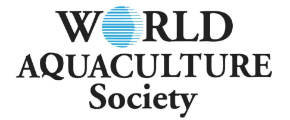THE ECOSYSTEM APPROACH TO SHRIMP FARMING: AN ANALYSIS ON THE NW MEXICO
An ecosystem approach to aquaculture is key for understanding interactions and processes with ecosystems as well as other human activities on the coastal zone, and this is important for its planning and management. The objective of this study is to present a synthesis of the shrimp farming development in northwest Mexico from the perspective of the ecosystem approach. Around 92% of the shrimp farming in Mexico has been development in a coastal zone characterized by deltaic plains and coastal lagoons localized in a subtropical-tropical gradient on the States of Sonora, Sinaloa, and Nayarit, where there are ~60,000 ha shrimp ponds operating with an average yield of ~2 ton ha-1; however, shrimp farming have an inefficient use of nitrogen (N) and only 20-24 % of N content in the food is converted into shrimp biomass, and practically all the rest of N is discharged to coastal lagoons and the sea; in addition the shrimp effluents deliver phosphorous, organic matter, and bacteria to sea. In 2013, shrimp production decreased ~70 % due to diseases. Shrimp aquaculture is mainly supported by two coastal ecosystem services: (1) water supply, and (2) nutrient recycling. However, in this coastal zone is also the most extensive irrigated agriculture of the country with ~1 million ha of crops sustained by fertile soils from deltaic plains, which also operates an inefficient use of N <30 % and also discharges agrochemicals to the sea. Additionally, in this coastal zone there are ~3.5 million inhabitants and it is estimated that 80 % of the wastewater from coastal cities is not treated and is poured into coastal lagoons and the adjacent sea. In summary, the coastal ecosystem services of both good-quality water supply and recycling of nutrients required for shrimp farming are affected by wastewater from agriculture, human populations, and the same shrimp farming. The management strategy must involve improvement of both shrimp farming and agriculture practices, and treatment of urban wastewater for restoring coastal ecosystem services. The Marine Ecological Planning Program of the Gulf of California ruled this coastal zone as a priority and its implementation represent an opportunity for preservation of the ecosystem services that support productive activities such as shrimp farming.










